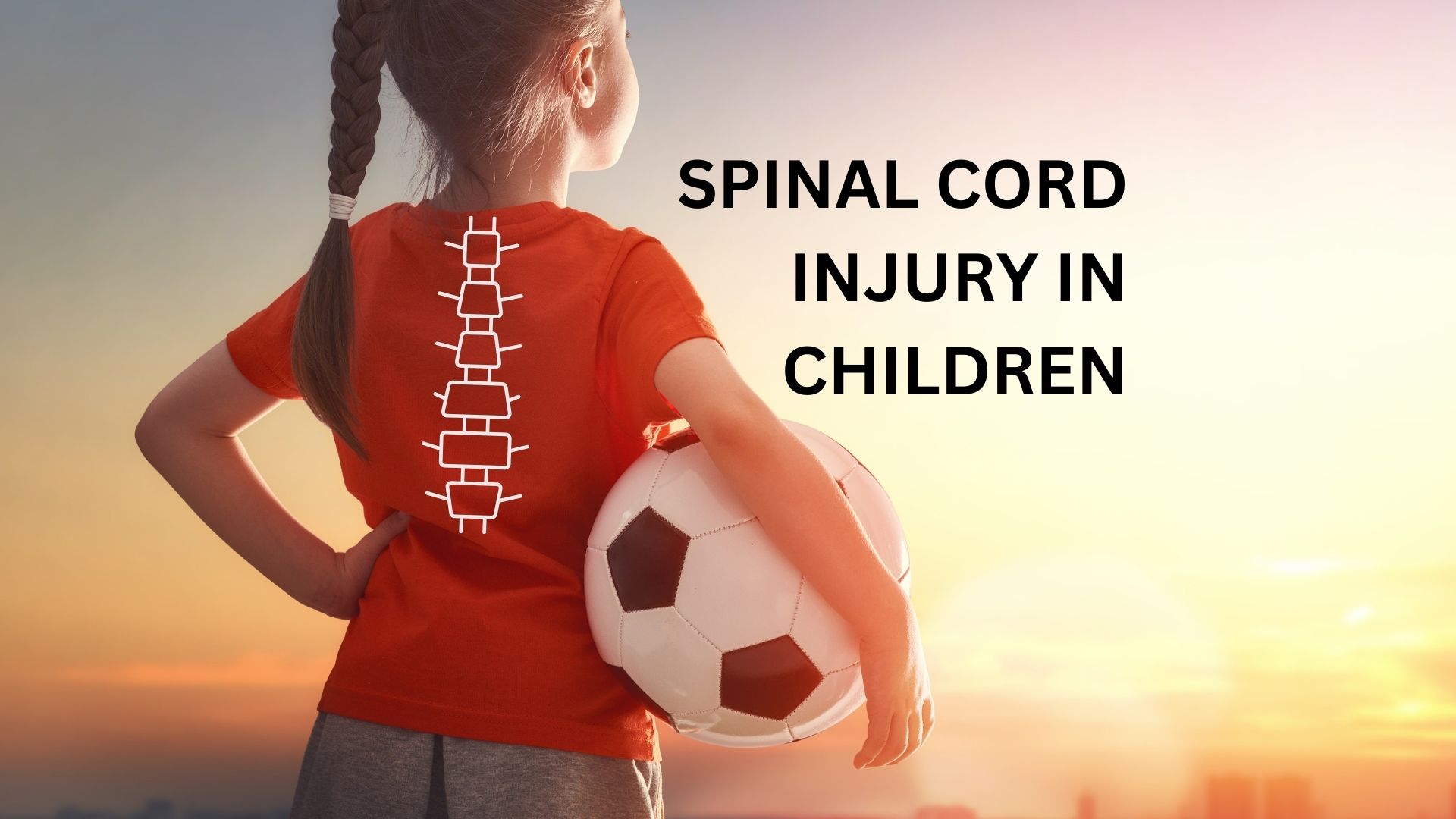
Spinal cord injuries in children can have profound and long-lasting effects on their lives and those of their families. These injuries, often caused by accidents or trauma, require immediate medical attention and comprehensive care to minimize their impact. Let us explore the causes, treatment, and recovery process of spinal cord injuries in children.
Understanding Spinal Cord Injuries
The spinal cord is a vital component of the central nervous system, responsible for transmitting messages between the brain and the rest of the body. When a child sustains a spinal cord injury, the flow of these messages can be disrupted, leading to varying degrees of impairment. Spinal cord injuries affect movement, feeling, and bodily functions below the injury site, often causing paralysis. Recovery and quality of life depend on factors like the injury’s severity and where it occurred.
Causes of Spinal Cord Injuries in Children
Spinal cord injuries in children typically result from accidents or trauma, with motor vehicle accidents, falls, and sports-related injuries being the leading causes. These injuries often occur during adolescence, a time when children are more likely to engage in risky behaviors or participate in high-impact activities without fully understanding the consequences.
Falls from heights, such as trees or playground equipment, are common among younger children, while adolescents are more prone to injuries from sports like football, gymnastics, or diving. Additionally, motor vehicle accidents, particularly when children are not properly restrained, can result in severe spinal cord injuries.
Effects of Spinal Cord Injuries on Children
The effects of spinal cord injuries on children can be profound and multifaceted. Depending on the severity and location of the injury, children may experience varying degrees of paralysis or loss of sensation below the level of injury. Some of them can be injuries to the cervical spine (neck) can result in tetraplegia, affecting both the arms and legs, while injuries to the thoracic or lumbar spine may cause paraplegia, affecting only the lower body.
Beyond physical limitations, spinal cord injuries can also impact children’s emotional well-being and mental health. Adjusting to life with a disability, coping with chronic pain, and facing potential long-term complications can lead to feelings of frustration, depression, or anxiety. It’s crucial for healthcare providers and caregivers to provide comprehensive support to address these psychological challenges. (Shieh, 2021)
Immediate Medical Response
When a child sustains a spinal cord injury, immediate medical attention is paramount. Emergency responders and healthcare professionals follow established protocols to stabilize the child, prevent further damage, and initiate appropriate treatment. Immobilization of the spine and transportation to a specialized pediatric facility are critical steps in the initial response to SCI. (Shriners Children’s)
Treatment and Rehabilitation
Treatment for spinal cord injuries in children often involves a multidisciplinary approach, with a team of specialists collaborating to address the diverse needs of the child. Acute management may include surgical interventions to relieve pressure on the spinal cord and stabilize the spine. Rehabilitation programs focus on maximizing function and independence through physical therapy, occupational therapy, and assistive devices.
Long-Term Care and Support
The journey of recovery from a spinal cord injury can be lengthy and challenging for both the child and their family. Long-term care and support services play a vital role in helping children adapt to life with SCI. This may involve ongoing medical monitoring, psychological support, educational assistance, and access to community resources.
Promising Research and Innovation
Advancements in medical research and technology offer hope for improved outcomes and quality of life for children with spinal cord injuries. Experimental treatments, such as stem cell therapy and neurostimulation, hold potential for restoring function and enhancing recovery in SCI patients. Continued investment in research and innovation is essential to unlocking new avenues for treatment and rehabilitation in pediatric spinal cord injuries. (Stanford Medicine Children’s Health)
Prevention and Awareness
While advancements in medical care are crucial, prevention remains the best strategy for reducing the incidence of spinal cord injuries in children. Educating parents, caregivers, and children themselves about safety measures and injury prevention strategies can help mitigate risks and prevent accidents. Raising awareness about the importance of spinal cord injury prevention in schools, communities, and healthcare settings is essential for promoting a culture of safety and well-being.
Spinal cord injuries in children present unique challenges that require prompt intervention, comprehensive care, and ongoing support. By understanding the causes, treatment options, and long-term implications of SCI, we can better equip ourselves to prevent these injuries and provide optimal care for affected children. Through a combination of medical advances, rehabilitation efforts, and community support, we can strive to improve outcomes and quality of life for children living with spinal cord injuries.
Works Cited
“Spinal Cord Injuries (for Parents) | Nemours Kidshealth.” Edited by Eileen Shieh, KidsHealth, The Nemours Foundation, Sept. 2021, kidshealth.org/en/parents/spinal-cord-injuries.html.
Stanford Medicine Children’s Health. “Acute Spinal Cord Injury (SCI) in Children.” Stanford Medicine Children’s Health, www.stanfordchildrens.org/en/topic/default?id=acute-spinal-cord-injury-sci-in-children-90-P02590.
Shriners Children’s. “Spine & Spinal Cord.” Shriners Children’s, www.shrinerschildrens.org/en/pediatric-care/spine-and-spinal-cord.
